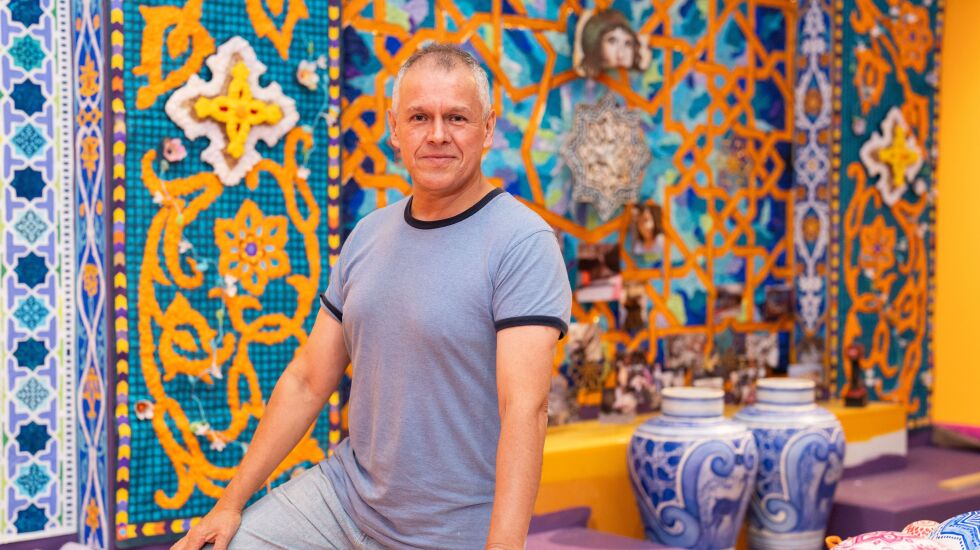
Each year in Chicago, Mexican-American families set up altars filled with flowers, food and drinks in memory of friends and family who have passed away.
So when the National Museum of Mexican Art in Pilsen opened its doors in 1987, curators decided to honor the Mexican tradition of Día de Muertos (Day of the Dead) with an annual exhibit in the main gallery.
This year’s exhibit, titled “Dia de Muertos, Living Presence,” honors the nearly 55,000 people who died in the earthquakes in Turkey, Morocco and Syria earlier this year, according to the museum’s chief curator Cesáreo Moreno. It’s also a tribute to women from all over the world who have disappeared, been violated, or murdered.
Eighteen artists have set up various works of art for the exhibit, including ofrendas, or offerings, honoring deceased Chicagoans, a mural and various paintings.
The artist tasked with creating the exhibit’s largest ofrenda is Alejandro García Nelo, from Valle de Bravo, Mexico.
“We Mexicans have this tradition of commemorating in a respectful and affectionate way,” García Nelo told the Sun-Times during a recent conversation at the museum. “So when they told me about the offering ... I was inspired by what that culture has offered to the world through the centuries.
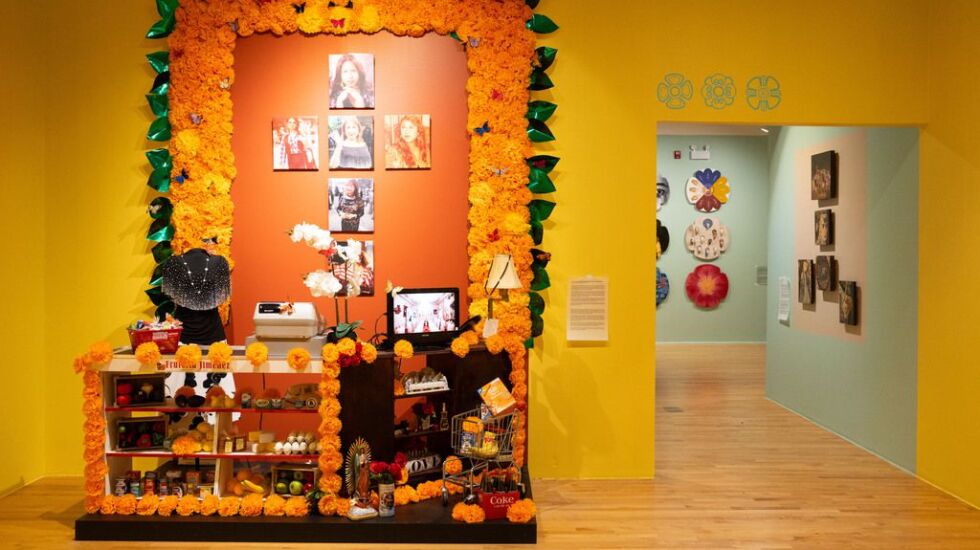
“The designs [in the ofrenda] are inspired by their mosques, their carpets, their way of making art, he said.”
Being from Mexico, García Nelo is no stranger to earthquakes.
“I have seen the tragedy first-hand. When I was young, I was impacted by the earthquakes of 1985 and recently, those of 2017,” he said, referencing the 7.1 and 8.1 earthquakes that hit Mexico six years ago. He hopes that his tribute to the victims in Turkey, Morocco and Syria is seen as a respectful way of honoring those who have passed.
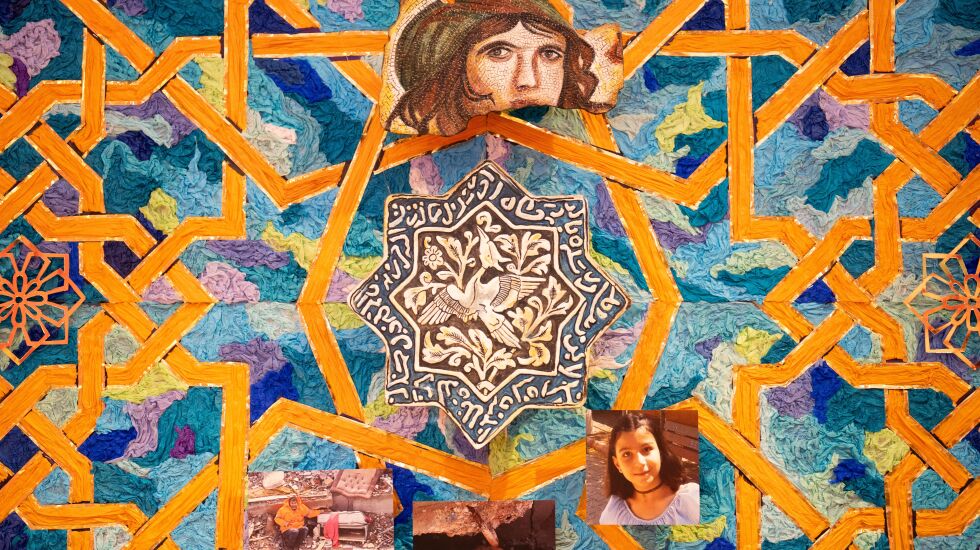
The first time García Nelo came to the NMMA to make an ofrenda was in 1995. He’s returned several times since then, also helping out with children’s workshops and other projects.
And on Oct. 28, the museum will open its doors to the greater Pilsen area for its Day of the Dead Xicágo event. Guests are invited to create their own ofrendas and share “pan de muerto,” a sweet bread. In next-door Harrison Park, community members can enjoy live music and folkloric dance performances. There will also be interactive art projects.
“It’s really turned into the biggest celebration that we do every year,” Moreno said. Families can sign up for a space to make their own ofrenda. It will live in the park for that day, and can be taken home in the evening to display on Día de Muertos on Nov. 1 and 2.
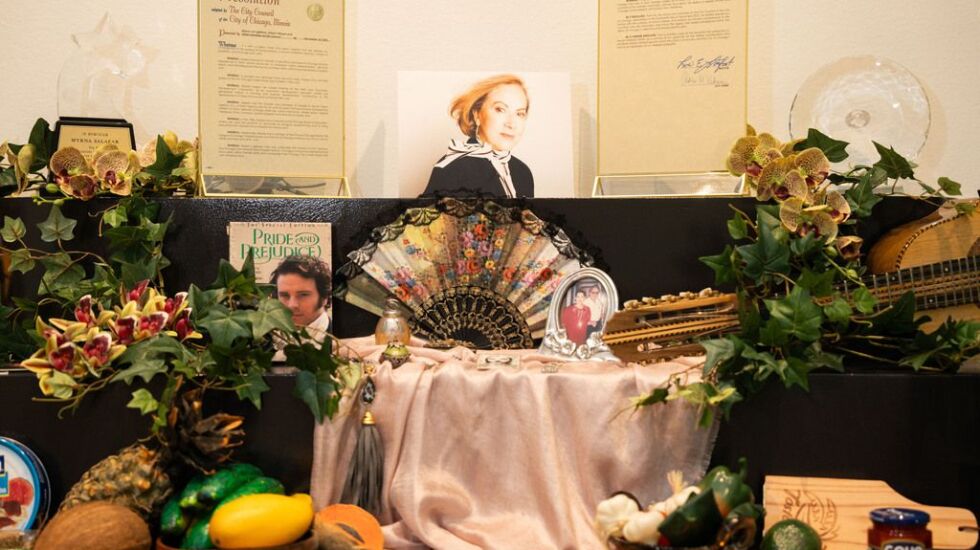
Moreno also said that the museum asks people to send in a photograph of a deceased family member that will be projected onto the side of the building.
“It’s about something that’s real, that everybody is going to experience or has experienced,” he said. “And everybody can come to this tradition and this exhibit from their own path.”
Curated by Gustavo Herrera and Dolores Mercado, more than half of the artwork in the exhibit was made by women, Moreno said. Several artists traveled from Mexico and other parts of the United States to install their pieces.
Dolores “YUDA” Navarro and Janín García painted a large mural inside the museum called “Guide.” Both street artists from Mexico, they are “very proud to be able to cross borders with the things we do,” García said during a chat at the museum.
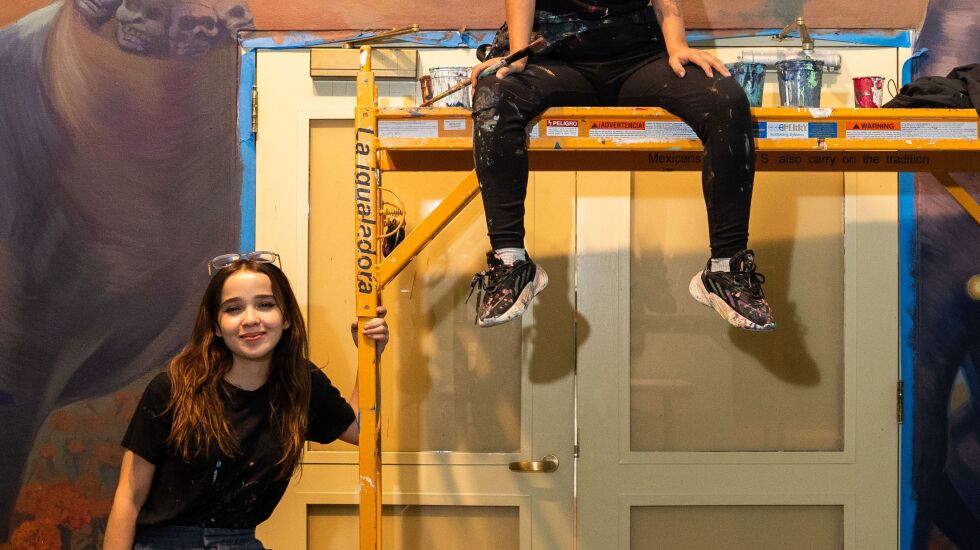
At the entrance and exit of the gallery, their mural will guide guests through each of the art installations — much like the Xoloitzcuintli, or Mexican hairless dogs, which are believed to guide humans from their death into the afterlife. The people of Mexico’s native Aztec and Nahua cultures considered these dogs, known simply as Xolos, to be sacred. Many Mexicans today still believe that they represent the connection between life and death.
García, 32, is a graphic designer by training but was enamored with street art in her hometown of San Luis Potosí, Mexico, and decided to pursue it as a career. She has spent the last eight years dedicated to her artwork.
“I really liked the dynamics that murals can create in the public space,” she said. “[It’s] something that started out as something we did on the weekends, and it became our way of life.”
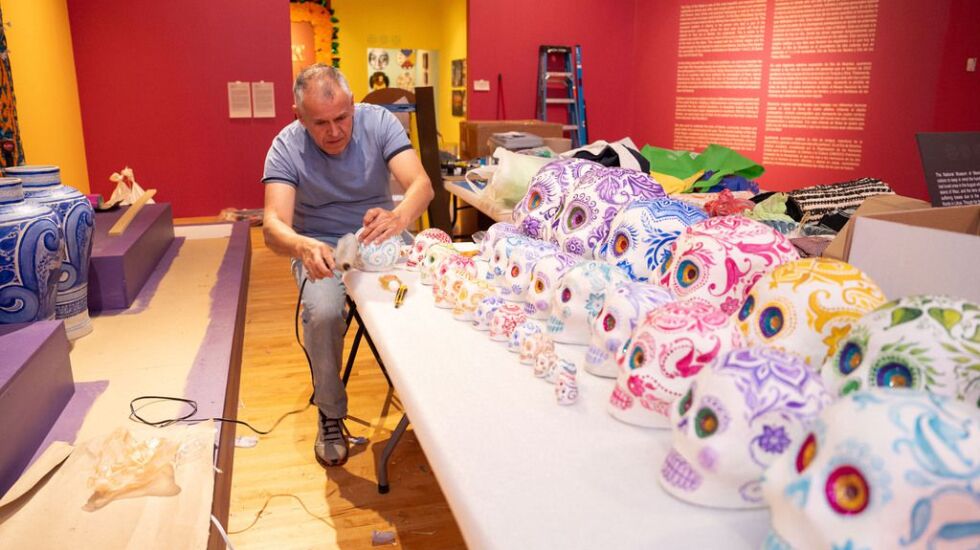
Navarro, 26, remembers loving drawing from a young age. When she was 15 years old she joined her friends in making graffiti in Jalisco, México, and eventually became a professional artist.
After meeting Herrera and Mercado at the University of Guanajuato in Mexico last year, the two were tasked with collaborating on the mural for this year’s exhibit.
“[García] has been one of the first women who has always been fighting to open spaces for more women,” Navarro said. “There are very few women in Mexico who paint in the streets. It was there that we found each other.”







